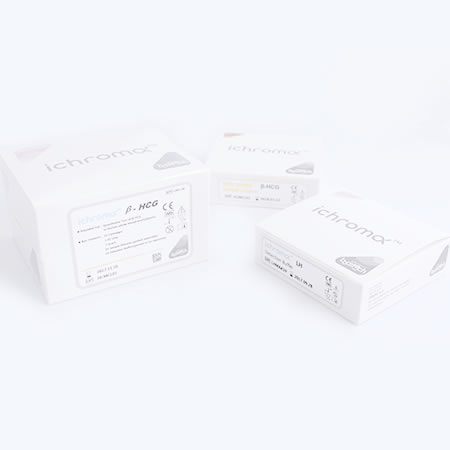| Measuring Range: | 0.02-10 ng/ml |
| Sample Volume | 100ul |
| CV | <7% |
| Test time | 12 minutes |
| Sample Type | Serum/Plasma(Lithium) |

i-Chroma Anti-Müllerian Hormone (AMH)
Since ovarian follicles produce anti-Müllerian hormone in adulthood, measuring the levels of anti-Müllerian hormone in blood provides a way of estimating ovarian reserve in women. Consequently, anti-Müllerian hormone levels is routinely used to predict how well a woman is likely to respond to ovarian stimulation for in vitro fertilization (IVF) fertility treatment, and what doses of hormones should be used during IVF.
In women, anti-Müllerian hormone levels peak around puberty and remain relatively constant until after the menopause, when no follicles remain, and levels of anti-Müllerian hormone become low.




